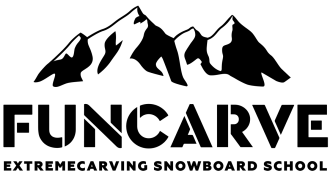Best snowboard carving bindings
Bindings and their adjustment for soft carving Bindings play a very important role in soft carving. They should transfer the load on the edge correctly, be comfortable, lightweight, practical and maintainable.
1. Snowboards for softboot carving.
2. Modern snowboard technologies
3. How to read snowboard descriptions
When choosing bindings note:
- Aluminum base is the most reliable performance. Plastic one or a combination of aluminum heelcup with plastic base in the moments of critical loads can burst at the seams, or at the joint points, at the perforations. This applies not only to carving because in the case of unsuccessful landing to the springboard, especially in cold weather, the base may crack;
- Buckles should be metal! This part of bindings is replaced rather often. Manufacturers often mask plastic by painting it like metal. Metal is always cold, even in the store in the summer, so it is enough to touch it by sensitive part of your body, such as tongue or nose :) and you cannot go wrong;
- Plastic bindings discs will serve you depending on the loads of course, two or three seasons, aluminum ones – until you get bored with snowboarding;
- The most comfortable highback is wide and of concave shape. Its stiffness should be chosen according to the goals and experience of snowboarder. However not everyone knows how to do it. You should choose the most appropriate for you among several by twisting it in vertical axis. It is necessary to evaluate its elasticity and torsion stiffness itself. The stiffest non-metallic highbacks (carbon) are produced by Ride in models CAD, NRC, Alpha, and in their binding series Drake SuperSport;
- Straps should be screwed as far as possible. Now you can often see the binding system where strap is inserted into the binding from below before it is installed on a snowboard and it holds due to some distance piece. Such straps will never get lost which is plus. However if they break, for instance in the cold, it can become a problem to find suitable one for replacement while in other system of straps it is enough to make a new perforation.
These choice criteria are arranged top-down according to their importance. However ideal bindings don’t exist. And if they do exist, these are very expensive. So if you like some model and it fit you in size/price/color/availability in shop and it matches at least two or three criteria from the list then don’t hesitate to buy it. For instance, plastic bases of some manufacturers are solid enough to feel confidently in such bindings and besides they are substantially lighter than aluminum ones.
When buying new bindings be sure to pay attention to the possibility of their adjustment. Unfortunately, some companies produce bindings inappropriate for tuning and repair.
Bindings adjustment for soft carving
It is important to adjust the bindings correctly – you should feel comfortable in them and at the same time they should work as efficiently as possible:
- Place bindings symmetrically on inserts, this will help you to feel the radius of turn of your snowboard and to keep your weight 50:50 more precisely.
- Find the width of the stance convenient for you. Remember, too wide stance will limit your vertical motion and too narrow one will require a more precise weight distribution;
- Choose comfortable angles for bindings, note how close the bindings are placed to the edges of the board. Probably you will have to give up comfort to turn them a bit more (but not more than 30 °);
- Try to minimize the overhang of the boot. Ideally, it should not go beyond the edges of the board. It is possible to save up centimeters by reducing the size of the binding base for one size and shifting the gaspedal;
- When turning the bindings at angles more than 21 ° it is necessary to turn the highback in the vertical axis so that it is parallel to the maximum to the back edge of the board. This will increase its effectiveness in turns.
- It is advisable to tilt forward highback to the base – this will result in a more efficient work of the binding in backside and increase responsiveness and stability in turns. Keep in mind that the highback of your back binding should be tilted on one or two levels more than the front one;
- Change the pair of ankle or toe straps from the left binding to the right one. This will lead to the buckles being unbuckled towards each other, and it means that you will be able to unfasten your leg in a second. And this is also convenient for buckling them;
- Carefully examine where and how buckles on your bindings are situated, it is necessary to turn the straps so that you wouldn’t damage them if you fall on rough snow.




